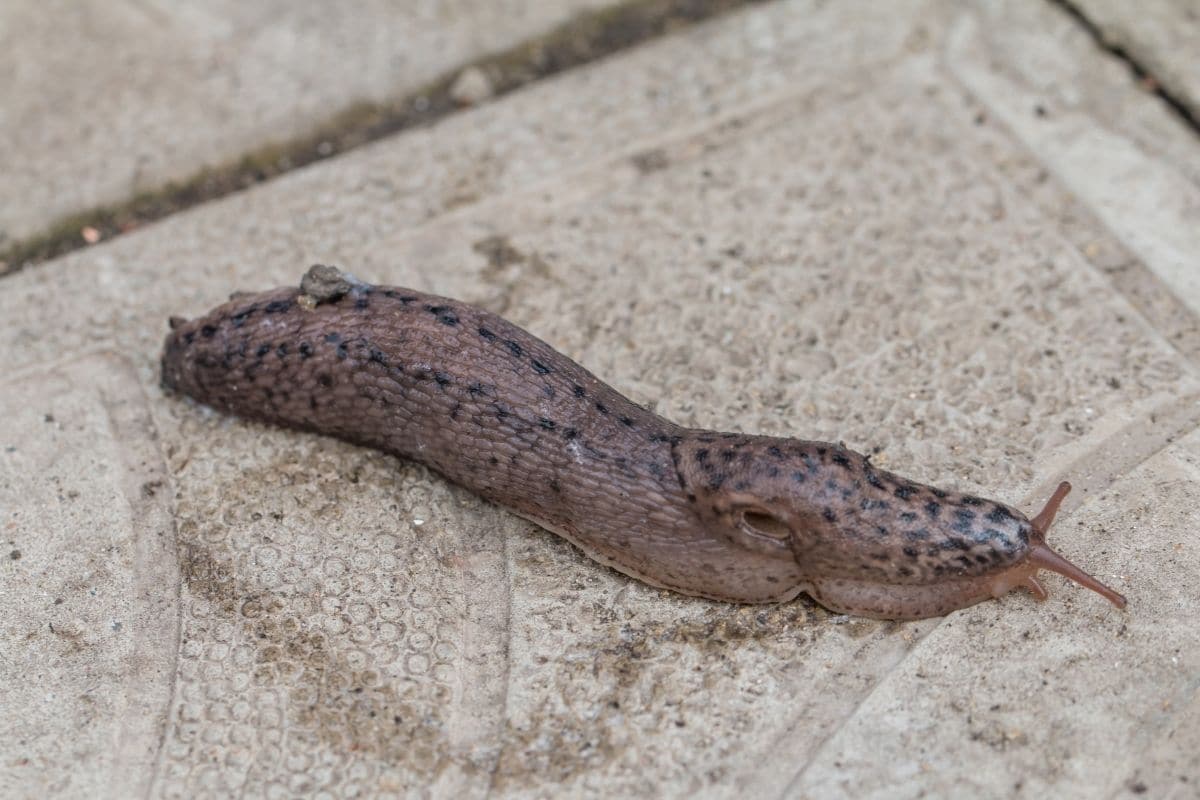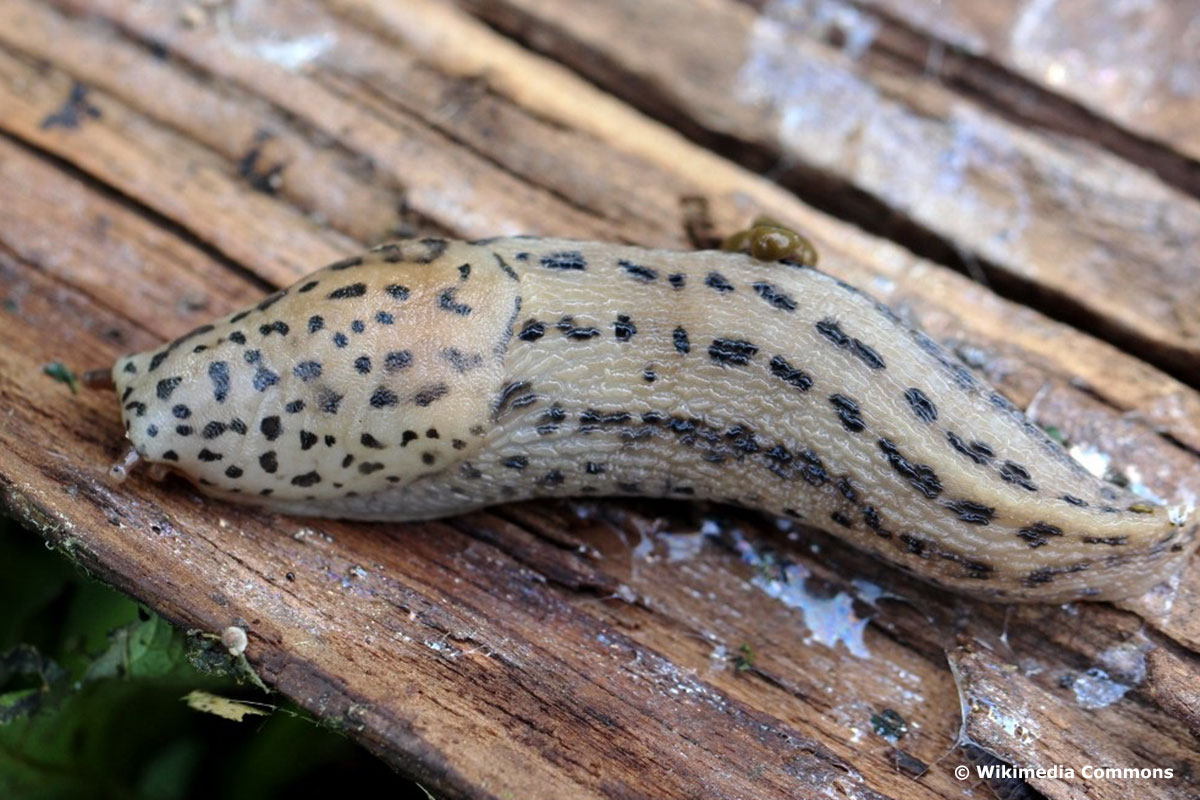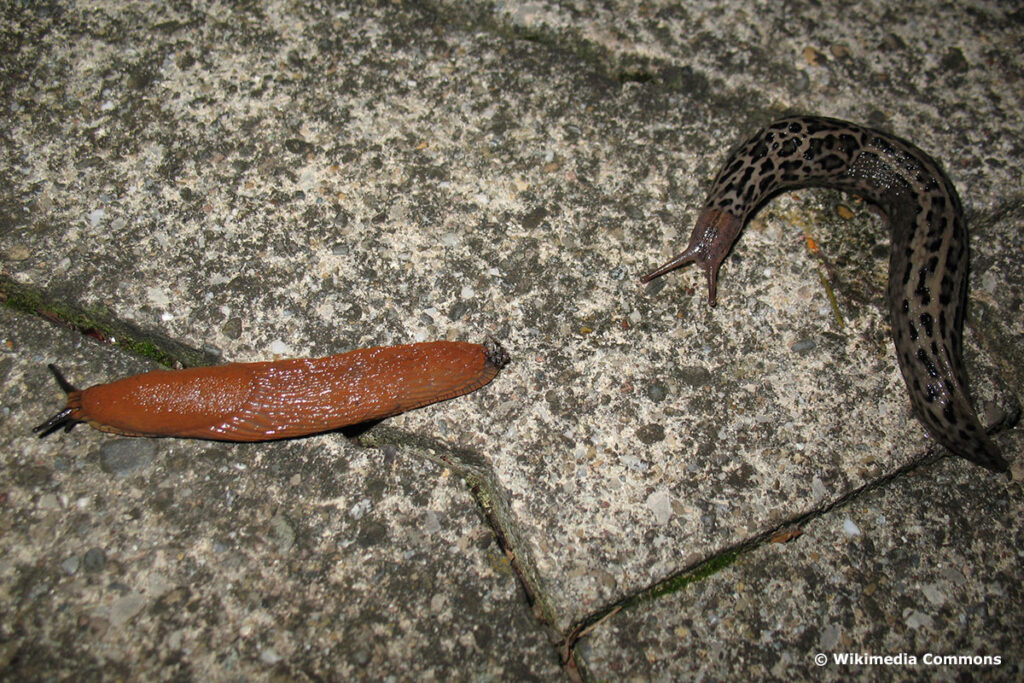Thanks to their appearance, tiger slugs (Limax maximus) are not only a real feast for the eyes, but also valued beneficial insects in the garden. In this article we tell you how to attract tiger swallows.
Attracting tiger slugs to your garden can be an interesting endeavor, as these unique creatures play a role in the ecosystem by recycling organic matter. Tiger slugs are beneficial for your garden as they help break down decaying plant material.
Contents
- 1 Here are some steps to attract tiger slugs to your garden:
- 2 Interesting facts about tiger slugs
- 3 Beneficial insect in the garden
- 4 Attract tiger slugs
- 5 Hiding places
- 6 What Do Tiger Slugs Eat?
- 7 Are Tiger Slugs Good for the Garden?
- 8 What Smells Attract Slugs?
- 9 What Attracts Slugs the Most?
- 10 Do not sprinkle slug pellets
- 11 Author
Here are some steps to attract tiger slugs to your garden:
Provide Habitat: Tiger slugs require a suitable habitat to thrive. Create spaces in your garden where they can find shelter and protection. This includes leaf litter, logs, rocks, and damp areas.
Mulch and Leaf Litter: Use organic mulch and leave leaf litter in your garden. This provides hiding spots and a source of food for tiger slugs. Avoid chemical treatments on mulch or leaves that may harm them.
Damp Environment: Tiger slugs prefer moist conditions. Water your garden regularly to keep the soil consistently damp, but not waterlogged. Use a soaker hose or drip irrigation to maintain moisture levels.
Plant Selection: Grow plants that tiger slugs are known to feed on. These include a variety of organic materials such as decaying leaves, fungi, and algae.
Avoid Pesticides: Refrain from using chemical pesticides in your garden, as they can harm tiger slugs and disrupt their natural environment.
Garden Design: Design your garden with natural features that provide shade and dampness, such as a small pond or water feature. This can be an attractive habitat for tiger slugs.
Rocks and Logs: Place rocks and logs strategically in your garden. Tiger slugs often take shelter beneath them during the day.
Nighttime Observation: Tiger slugs are nocturnal, so you are more likely to spot them in your garden during the night. Take a walk with a flashlight and observe their activity.
Avoid Disturbance: Once you’ve created a suitable environment, it’s important to minimize disturbances in the areas where tiger slugs live. This will allow them to establish a stable presence.
Record Observations: Keep a record of tiger slug sightings and activities in your garden. This can be a fun and educational way to track their presence and learn more about their behavior.
Educate Yourself: Learn more about tiger slugs and their role in the ecosystem. Understanding their significance can help you appreciate their presence in your garden.
It’s important to remember that while attracting tiger slugs can benefit your garden’s ecosystem, they can also feed on your plants. To maintain a balanced garden, be mindful of plant selection and consider using natural methods to manage slug populations if they become a problem, such as beer traps or barriers.
By providing a suitable habitat and avoiding chemical treatments, you can attract tiger slugs to your garden and observe these fascinating creatures in their natural environment.
Interesting facts about tiger slugs
The Tiger Snail is a predatory nudibranch species that is widespread in Europe. Besides its special way of life, however, its appearance is special: it has a grayish to brownish colored body, which is decorated with a kind of pattern. The stripes, dots and spots are reminiscent of a tiger pattern. In addition, the tiger snail is characterized by the following features:
- about 10 – 20 cm long
- keel on the top of the tail
- hermaphrodite
- nocturnal

Beneficial insect in the garden
Many species of snails are considered pests that like to help themselves to the home vegetable patch. Not so the tiger snail, because this is even known as a beneficial insect. Instead of fruit and vegetables, its diet consists mainly of mushrooms and dead plant parts. Likewise, the tiger slug is also known to eat eggs from other members of its species. The beneficial snail does not even shy away from other slugs. Thus, it is a natural predator of slugs and can help keep them out of the garden efficiently.
Attract tiger slugs
Tiger slugs are common, but they don’t always take up residence in the home garden. The reason is usually simple: they don’t like the habitat. Therefore, if you want to attract tiger slugs, you need to provide them with an optimal habitat. Below we tell you what factors to consider in this regard.
Hiding places
Tiger slugs have numerous predators, which is why they hide during the day. They prefer to crawl into damp and dark places, such as dry stone walls, piles of branches and leaves, and compost heaps. Take this into consideration when landscaping your garden if you want to attract tiger shrimp. Additionally, you can take the following measures:
- Set up wooden boards or hollow blocks
- place them strategically
- near vegetable beds
- preferably create several nests

What Do Tiger Slugs Eat?
Tiger slugs, also known as leopard slugs (Limax maximus), primarily feed on decaying plant material and organic matter. Their diet includes:
- Decaying Leaves: Tiger slugs are detritivores, meaning they consume decaying leaves as a significant part of their diet. They play a role in breaking down fallen leaves in the garden, contributing to the decomposition process.
- Fungi: Slugs have a particular affinity for fungi, including mushrooms and other fungal growth. They are known to feed on various fungal species.
- Algae: Tiger slugs also graze on algae, particularly in damp and shady areas where algae tend to grow.
- Decomposing Plant Debris: Aside from leaves, tiger slugs feed on decomposing plant debris such as rotting wood and bark. They help recycle organic matter in ecosystems.
- Dead Insects: On occasion, tiger slugs may consume dead insects they come across, further aiding in the decomposition of organic material.
It’s worth noting that while tiger slugs primarily feed on decaying organic matter, they may occasionally nibble on living plant material. This is usually not a significant concern for gardeners, but it’s something to be aware of if you have certain vulnerable plants in your garden. Overall, tiger slugs play a beneficial role in nutrient cycling and decomposition in natural ecosystems.
Are Tiger Slugs Good for the Garden?
Tiger slugs, also known as leopard slugs, can have both positive and negative effects on your garden. They are decomposers that help break down decaying plant material, contributing to nutrient recycling. However, they may also feed on living plants, which can be detrimental to certain garden crops.
How to Attract Slugs to Your Garden: To attract slugs to your garden, provide a moist and shaded environment, as slugs prefer these conditions. You can add organic mulch, leaf litter, and moisture-retaining features like a small pond or water source to make your garden more slug-friendly.
What Smells Attract Slugs?
Slugs are attracted to the smell of decaying organic matter, including compost and mulch. Additionally, they are sensitive to certain scents, such as beer, which can be used as bait in slug traps.
What Attracts Slugs the Most?
Slugs are most attracted to damp, cool, and dark environments. They are also drawn to areas with abundant organic matter, as it serves as a food source and provides moisture.
Tip: Tiger snails search for food within a radius of about 5 to 10 meters.
Do not sprinkle slug pellets
Hardly any amateur gardener has not had to deal with slugs in the vegetable patch. In this case, many resort to slug pellets to get the slug infestation under control. Slug pellets are very effective at controlling slugs, but they also kill the beneficial tiger slugs. Therefore, if you want to settle tiger snails, do not use slug pellets. Instead, reach for remedies and measures that repel slugs but do not kill them.
- Set up slug barriers made of metal, wood or wire.
- Scatter hair, wool or rock dust
- Collect snails and deposit them somewhere else
Source: https://en.wikipedia.org/wiki/Limax_maximus


